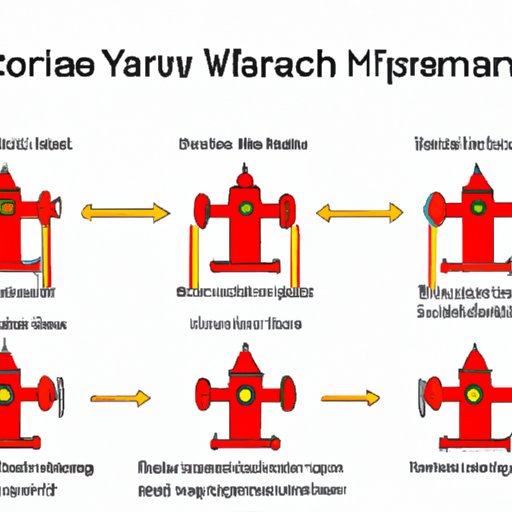
Building Stronger Glutes: A Comprehensive Guide to the Fire Hydrant Exercise
If you’re looking for a workout that can help you build stronger glutes, improve your hip mobility, and reduce lower back pain, the fire hydrant exercise may be just what you need. This popular workout has gained momentum in recent years and is hailed as one of the best exercises for targeting the glutes.

The Fire Hydrant Exercise: A Comprehensive Guide
The fire hydrant exercise may have a cute name, but it’s a serious workout that can help you tone your glutes and build a better overall body. To perform the exercise correctly, get down on all fours with your wrists directly beneath your shoulders and knees under your hips. From there, lift one leg out to the side, keeping the knee bent. Pause at the top of the movement, then return to the starting position.
The benefits of the fire hydrant exercise are plenty. The movement targets the gluteus muscles, and by keeping the knee bent, it engages both the hip and lower back muscles. Plus, it’s an excellent way to improve hip mobility and strengthen the core.
If you’re a beginner, start with a few sets of 10 to 15 reps per leg. You can increase the challenge by incorporating weights or resistance bands, but remember to focus on proper form to avoid injury.
The Benefits of the Fire Hydrant Exercise
While the fire hydrant exercise is a popular butt-toning movement, it also provides other benefits that may surprise you. For instance:
- The movement targets the glute medius muscle, which can help improve your hip and knee mechanics.
- It helps to improve your balance, coordination, and overall posture.
- The exercise helps to reduce lower back pain by strengthening the muscles in that area.
To maximize the benefits of the fire hydrant exercise, ensure proper form and engage your core throughout. You can also adjust your pace, increase resistance, or hold the movement for longer to increase intensity.
Getting Fit with Fido: The Fire Hydrant Exercise Just Got More Fun
If you’re a pet owner, you know that having a furry friend around can make working out more fun and engaging. Incorporating pets into your exercise routine can offer a multitude of benefits, such as reducing stress, increasing motivation, and improving the bond between you and your pet.
The fire hydrant exercise can easily be modified to include your pets. For example, have them sit beside you while you perform the movement, or ask them to paw at your raised leg. If your pet is small enough, you can even hold them during the exercise for added resistance.
Not only will you benefit from the workout, but your pet may also enjoy the extra attention and activity. Always ensure your pet’s safety by starting slowly and providing plenty of positive reinforcement.
10 Minute Fire Hydrant Challenge: How to Burn More Calories and Tone Your Glutes Quickly
We understand that busy schedules can make it hard to find time to work out. That’s why we’ve created a 10-minute fire hydrant challenge to help you burn more calories and tone your glutes quickly:
- Warm-up with some light cardio for two minutes.
- Perform 30 seconds of fire hydrant exercises on one leg, then switch to the other leg for 30 seconds. Repeat for three sets.
- Rest for 30 seconds.
- Perform 30 seconds of lunges on one leg and then switch to the other leg for 30 seconds. Repeat for three sets.
- Cool down and stretch for two minutes.
Remember to focus on proper form and engage your core throughout. You can also modify the challenge by increasing the duration or intensity of the movements.
Fire Hydrant Exercise: The Key to Achieving a Complete Lower Body Workout
While the fire hydrant exercise primarily targets the glutes, it also provides benefits to other areas of the lower body, such as hips, thighs, and core. By engaging these muscles, you can also improve cellulite, enhance posture, and increase energy levels.
Some variations of the fire hydrant exercise include changing the speed, range of motion, or foot position. Additionally, you can try holding the movement at the top of the lift for a few seconds or adding resistance bands or weights for extra intensity.
Common Mistakes to Avoid When Performing the Fire Hydrant Exercise
While the fire hydrant exercise is a relatively simple movement, there are some common mistakes that people tend to make. These include lifting the leg too high, dropping the hips, or twisting the torso. These mistakes can limit the effectiveness of the exercise or put unnecessary pressure on the lower back.
To avoid these mistakes, maintain a stable core, and keep the movements controlled. Engage your glutes and hips to lift your leg to the side, but don’t compromise your alignment by lifting too high or twisting your torso.
Conclusion
The fire hydrant exercise is a versatile workout that targets the glutes while providing additional benefits to the lower body, posture, and core. Try it out for yourself and experience the improvement in strength, mobility, and overall physical health.




